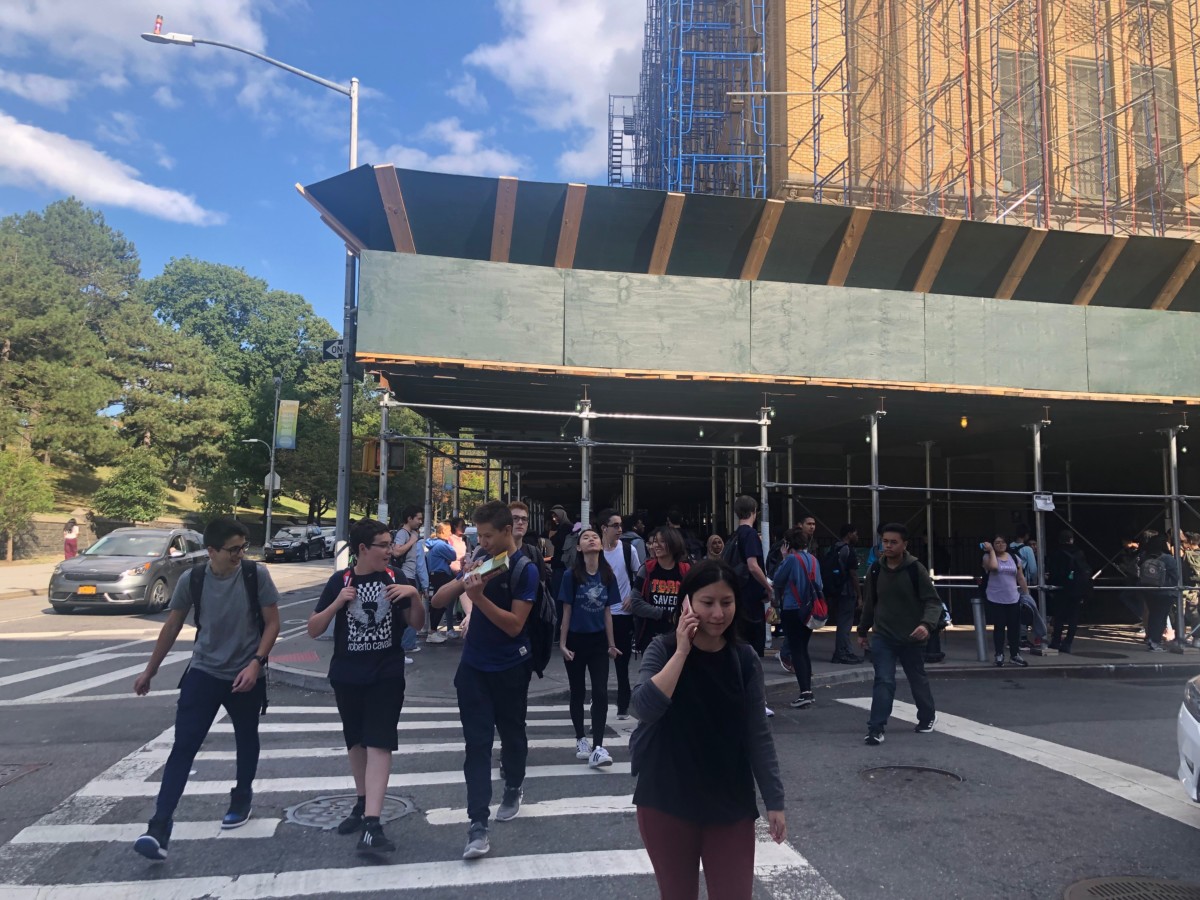The relentless August air finally starts to lift, replaced by a cool crisp breeze. Fort Greene is silent. Then, at precisely 4 p.m., laughter and chatter fills the air as hundreds of teenagers pour out of two grey metal doors on Fort Greene Place. It is the end of the first day at Brooklyn Technical High School.
A tenth grade boy grabs his friend’s shiny new backpack and breaks into a run towards Fort Greene Park. His friend grins and chases him. A mother sits upright on the bench directly across from the school. Her hands tightly clasp a bag of carefully prepared after-school snacks. Her eyes nervously search the crowd for her ninth grade daughter.
Behind the crowd of students, inside the two doors, a navy and white banner proudly proclaims, “Our Awards and Honorees.” The banner is pinned above a trophy case bursting with glinting gold goblets.
Established in 1922, Brooklyn Technical High School, in the heart of Fort Greene, is commonly referred to as Brooklyn Tech. It is a jewel of New York’s public school system and one of the most prestigious and selective public high schools in the United States. Still, it is apparent today that not all the students are delighted to be in this rigorous environment.
The crowd slowly dissipates, leaving only a group of four twelfth grade girls. They lean on the wall to the right of the doors and chat. Emily Wu, 17, wears rectangular glasses and fading acne scars on her cheeks. Jess Lau, 17, has a big smile but is dwarfed by her oversized backpack. Alex Antonov’s, 17, has blue eyes that shine brighter than the tulips on her sundress. Andrea Rodriguez’s multi-colored braces match her bracelets. She too is 17.
“High school is not the best four years of your life,” Antonov says simply, crossing her arms.
Wu, nods furiously, “We are conditioned to get good grades.”
Brooklyn Tech’s competitive environment and high standards are evident in the alumni they celebrate—from Fortune 500 CEOs, high-ranking diplomats, Nobel Laureates to Olympic medalists. “They’d rather teach a class to make you score well on your tests than figure out a way to make it interesting,” Antonov says. She is referring to what she believes is the value Brooklyn Tech teacher’s place on performing well on standardized tests, like the Advanced Placement tests and the SAT.
Wu elaborates: “It’s because of the reputation. The SHSAT. Like, without that, the school can’t do well.” The SHSAT, short for Specialized High Schools Admissions Test, is a major contributing factor to Brooklyn Tech’s national success. Each November, more than 30,000 eighth grade students take the three-hour test to gain entry into one of the eight specialized New York City high schools. Each year, only 1,900 students are accepted into Brooklyn Tech, making it the hardest of the schools to get into.
There is a debate
about eliminating the SHSAT altogether, replacing it with a system that grants
admission to high schools based on a student’s middle school class rank—thus
creating a more diverse student body. The test is often criticized for preventing students with
lower socio-economic backgrounds, who do not have money for tutors, to gain
entry to the specialized schools. New York Mayor Bill de Blasio’s bill to
reform the specialized school admissions system has not passed state legislature.
“Stress and more stress,” Antonov says, waving her hands about. Rodriguez, who has not spoken the entire time, begrudgingly smiles. “And,” she says, “it’s only the first day.”


Leave a Reply